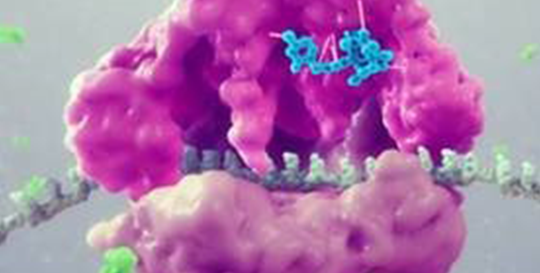
Nabriva receives FDA approval for novel antibiotics
Nabriva Therapeutics plc has got the go from the FDA to market its pleuromutilin antibiotic Xenleta (lefamulin), a protein synthesis blocker with new mode-of-action to treat community-acquired bacterial pneumonia.
The drug, which will be offered both for intravenous and for oral administration, blocks the peptidyl transferase domain of the ribosome. The drug has also fast track status to treat acute bacterial skin and skin structure infections. Nabriva intends to price the intravenous formulation at $205 per day and the oral drug at $270 per day.
The company puts its hopes on updates to CMS reimbursement policies for novel antibiotics. On August 2, 2019, the US government agency that administrates Medicare & Medicaid (CMS) announced several significant changes to hospital antibiotic reimbursement, effective October 1, 2019. In brief, the IPPS FY2020 Final Rule defines rules for reimbursing new in-hospital antibiotics when they are needed, it proposes a way to recognize the overall cost of managing drug-resistant infections, and is the most significant pull incentive for antibiotics that ever seen. The new rule also includes payments for managing the complexity of drug-resistant infections. In parallel, CMS highlighted the need to pair these incentives with antibiotic stewardship, promising action on the long-anticipated CMS antibiotic stewardship rule.
Nabriva could also put its hope on Europe, where the UK’ NHS is going will test a new subscription-style payment model to incentivise pharmaceutical companies to develop new drugs for resistant infections. NICE and NHS England and NHS Improvement are calling for companies to identify products to be considered for the initial phase of the test that forsees to make upfront payments to developers as risk compensation for the high development cost.
Community-acquired pneumonia (CAP) is one of the most common infectious diseases and is an important cause of mortality and morbidity worldwide. CAP affects people of all ages, and its symptoms occur as a result of oxygen-absorbing areas of the lung (alveoli) filling with fluid. This inhibits lung function, causing dyspnea, fever, chest pains and coughWithin the SENTRY surveillance programme for community-acquired bacterial pneumonia, More than 3000 isolates (n=3093) were identified between 2014 and 2016, including 1673 Streptococcus pneumoniae, 805 Haemophilius influenzae, and 555 Moraxella catarrhalis pathogens.



 adobe.stock.com - ipopba
adobe.stock.com - ipopba Gilead Science
Gilead Science